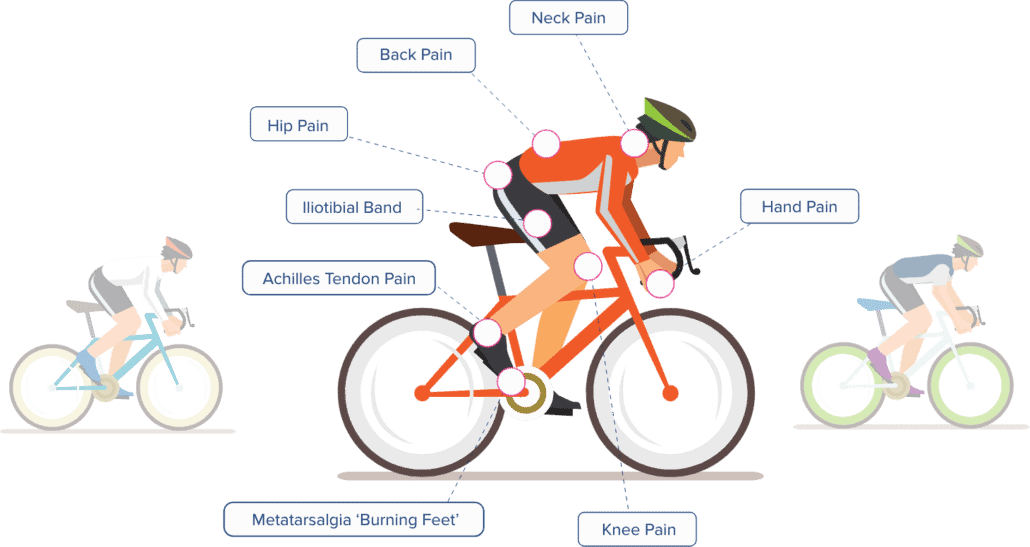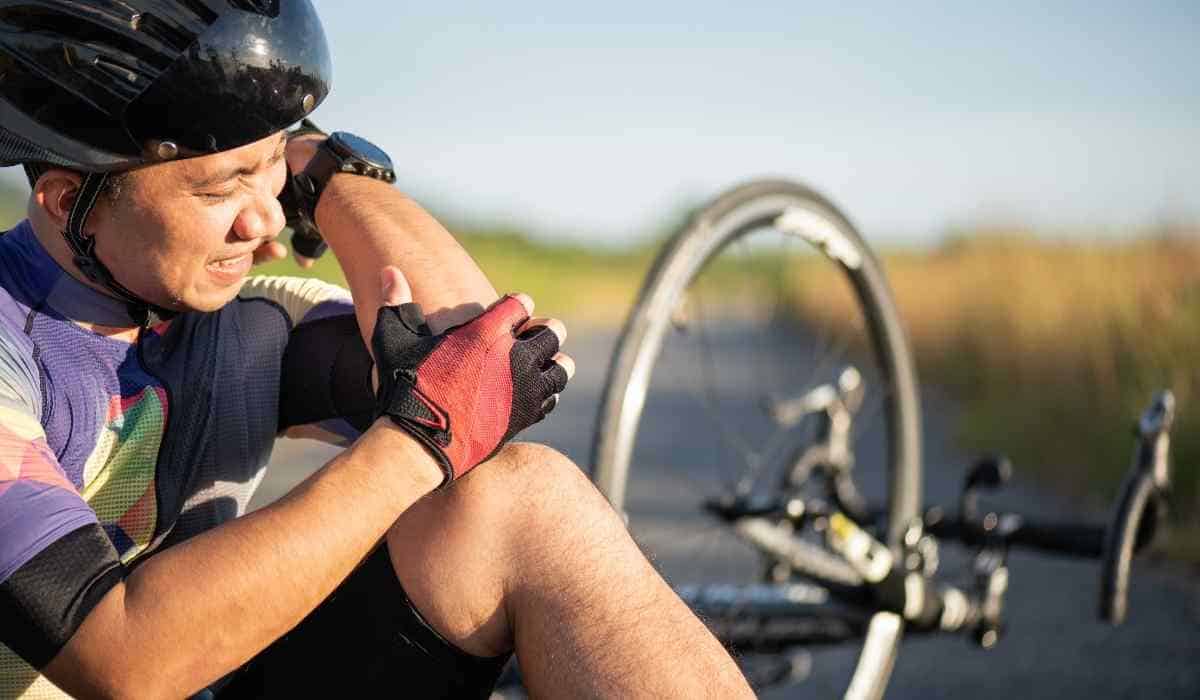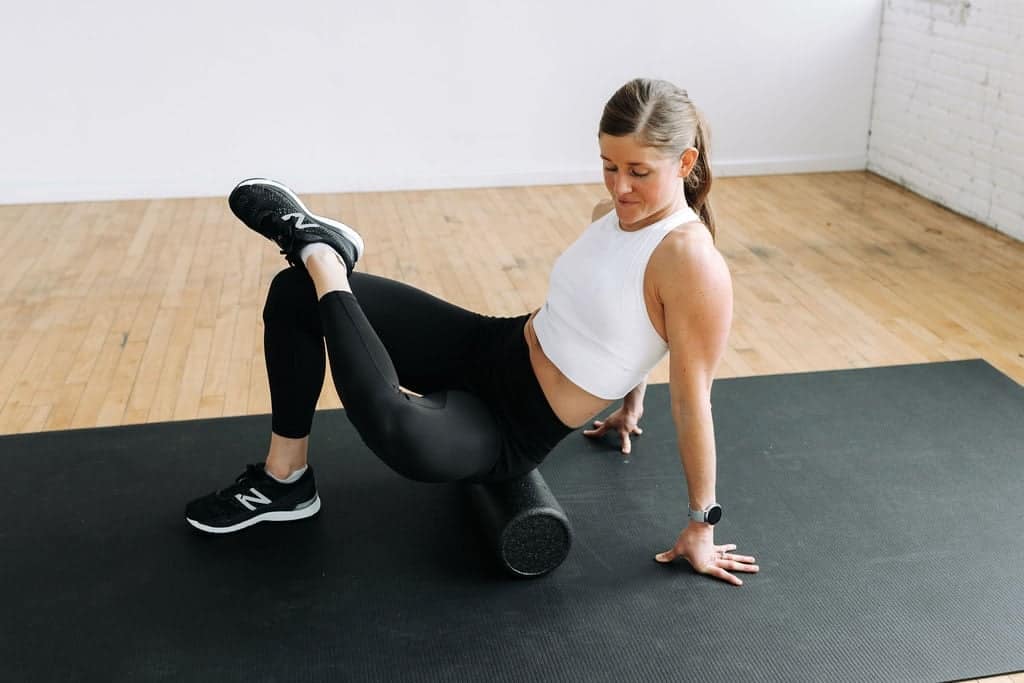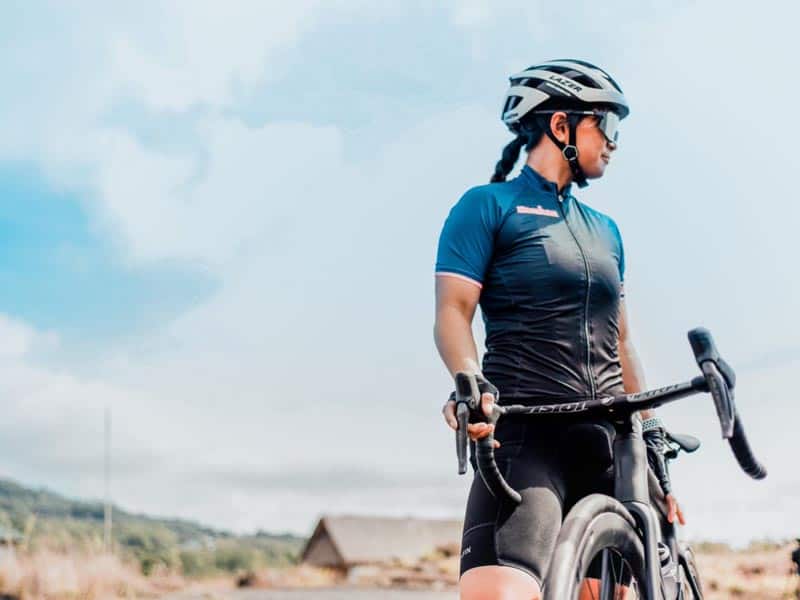Every time you hit the road on your bike, safety and avoiding any bumps in the ride should be your main focus. Embracing cycling safety can truly enhance your overall enjoyment.
Proper posture while pedaling is key to reducing strain on your body, helping you feel great even during long rides.
It’s important that your bike fit is just right; this prevents discomfort and potential injuries down the line.
Don’t skip on stretching before and after your rides; it genuinely makes a difference in keeping everything limber. Plus, wearing the right gear not only boosts your confidence but also plays a significant role in your safety on the road. A little preparation goes a long way in ensuring cycling safety, injury prevention, bike fit, and proper posture.
Understanding Cycling Safety Essentials
Staying safe while biking is all about being smart and prepared. You’ve probably heard before that wearing a helmet is important—well, it’s true! A helmet can cut the risk of head injuries by a staggering 85%.
Just imagine, that’s like having a superhero shield!
And let’s not forget about visibility.
Wearing bright clothing and using lights can make a significant difference.
In fact, around 40% of cycling accidents happen because drivers simply don’t see cyclists. So, when you’re planning your ride, please consider these safety essentials seriously.
Incorporating warmup exercises and stretching routines can also help you stay limber and ready for the road.
Being aware of your surroundings is key. Regularly scanning your environment allows you to pick up on road conditions, adjust your warmup exercises, incorporate effective stretching routines, implement hydration strategies, and enhance your endurance training.
Importance Of Proper Bike Fit
Getting the setup of your two-wheeled companion right makes a world of difference for your cycling experience. With everything aligned just right, you’ll notice a reduction in strain during long rides.
This makes each adventure—from quick jaunts around the block to serious long-distance treks—much more enjoyable.
| Importance of Proper Setup | Benefits of Good Fit |
|---|---|
| Reduces strain during long rides | Enhances overall comfort |
| Improves cycling efficiency | Makes long-distance treks more enjoyable |
| Encourages more frequent cycling | Boosts confidence on the road |
How To Maintain Proper Posture
Striking the right balance while biking can transform your whole experience. Proper alignment not only enhances your muscle strength but also elevates your enjoyment on those long rides.
When you’re cruising along, make sure your head, neck, and back form a nice straight line.
Your arms? Let them hang loose rather than tensing up.
Keeping this relaxed posture aids in comfort and protects your body from injuries as you pedal away.
Adjusting the height of your bike seat is another important factor. A properly set seat height fosters core stability and allows for optimal leg extension, making your ride smoother.
And don’t forget to tweak your handlebar height! Finding that perfect spot where you don’t have to stretch too far can make all the difference. It’s amazing how even the smallest adjustments can impact muscle strength, core stability, joint health, and the effectiveness of safety equipment.
Effective Warmup Exercises For Cyclists
Preparing your body before hitting the trails can make a world of difference for your ride. A solid warmup not only primes your muscles but also fine-tunes your cycling technique, setting you up for success right from the start.
Dynamic Stretches
Leg swings are fantastic for getting your hip flexors activated.
Stand next to a wall for stability, then swing one leg forward and back while keeping it controlled.
For the upper body, try arm circles to loosen up those tight muscles.
Start with small circles and gradually increase their size, moving both forward and backward. These movements can significantly enhance your performance when it’s time to tackle those hills. To shake off any sluggishness, consider incorporating efficient cycling techniques, focusing on recovery methods, practicing effective braking, and mastering obstacle navigation.
| Warm-Up Activity | Benefits |
|---|---|
| Dynamic Stretches | Activates muscles and improves cycling technique |
| Leg Swings | Enhances hip flexor activation |
| Arm Circles | Loosens upper body muscles |
| Efficient Cycling Techniques | Improves performance and recovery |
Key Stretching Routines For Injury Prevention
Getting your muscles ready before hitting the trails or the road can make a world of difference. Stretching isn’t just about showing off those cycling shoes; it’s about enhancing flexibility and reducing the risk of injuries, so you can enjoy every ride without any unnecessary setbacks.
Dynamic Stretching vs. Static Stretching
Dynamic stretching involves movement, making it perfect for warming up before you choose your gear selection. Static stretches, on the other hand, are best saved for after your ride when your muscles are ready to recover. Both play a role in keeping you injury-free.
Incorporating techniques such as choosing the right cycling shoes, careful gear selection, terrain adaptation, and following effective training plans can enhance your cycling performance and comfort.
Essential Hydration Strategies For Cyclists
Hydration can dramatically improve your performance on the bike. It’s about more than just sipping water; you need to grasp what your body requires based on various factors like temperature, humidity, and the intensity of your ride.
If you find yourself sweating buckets or feeling a bit dizzy, it’s a sign you might need to pay closer attention to how you’re fueling your hydration strategy.
Types of Fluids to Consume
Water is non-negotiable, but don’t forget about sports drinks; they can replenish those essential electrolytes and give you that extra boost when tackling longer cycling routes.
A balanced diet complements your hydration efforts, providing the nutrients necessary for optimal performance.
Timing Your Hydration
Make it a habit to drink before hitting the cycling routes, especially when balancing your diet and adhering to traffic rules during your crosstraining sessions.
Hydration for Cyclists
- Proper hydration can enhance endurance and reduce fatigue during long rides.
- Electrolyte drinks can help maintain fluid balance and prevent cramps during intense cycling sessions.
- Drinking water before cycling can improve focus and reaction time on the road.
- Monitoring sweat loss can help determine individual hydration needs for optimal performance.
Tips For Enhancing Core Stability
Strengthening your midsection can really make a difference when you hit the trails or the pavement. A resilient core not only boosts your performance but also supports energy conservation, letting you go the distance without feeling worn out.
Think of your core as the sturdy base of an athletic structure; it helps maintain your posture and balance, making every push on the pedals or each stride much more effective.
Planks are a fantastic way to build core strength.
They engage multiple muscle groups and are super versatile.
You might want to try holding a plank for 30 seconds to a minute; you’ll definitely feel the burn! And let’s not forget about stability balls—they’re not just for the gym. You can bring them into your home workouts during fun rest days or while you’re catching up on your favorite TV show, providing a perfect opportunity for energy conservation, enhancing mental focus, and honing your bike maintenance skills.
What Are The Best Recovery Methods
Taking care of your body after a workout is just as important as the workout itself. When you’re passionate about jogging or biking, finding effective ways to manage fatigue management makes a huge difference in your performance and enjoyment.
Stretching after your workout is a simple yet effective move for improving flexibility and preventing stiffness.
Alongside this, focusing on proper nutrition—especially proteins and carbs—can aid muscle repair, contributing to better fatigue management overall.
Hydration should never be overlooked; drinking enough water before, during, and after your workouts is key to staying energized. Incorporating active recovery days, like light walks or yoga, not only keeps you moving but also enhances blood flow to aid your recovery.
Crafting a personalized recovery plan tailored to your specific needs will help you stay consistent. Make use of fatigue management strategies, visibility equipment, pedal efficiency improvements, and risk management practices to enhance overall performance.
Post-Workout Recovery
- Stretching after workouts can improve flexibility by up to 30%.
- Proper nutrition, including proteins and carbs, can enhance muscle recovery by 25%.
- Staying hydrated can improve athletic performance by 10-20%.
- Active recovery days can reduce muscle soreness and improve recovery time significantly.
Conclusion
When it comes to cycling, tuning in to your body’s signals can truly transform your experience. Balancing your cycling drills with effective recovery methods is a game changer for every rider.
Consistency in your training is what helps you see those impressive results over time.
A thorough fitness assessment can point out your limits and help keep injuries at bay.
It’s all about focusing on body mechanics to refine your technique and boost your performance. Plus, managing your load management wisely ensures that you can enjoy longer rides without burning out.
So, as we wrap up our discussion on recovery, keep these strategies in mind to keep pedaling strong.
Originally posted 2025-01-12 05:10:14.





